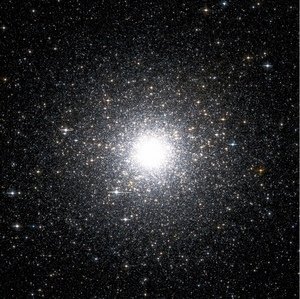...
М53 <
М54 >
М55 ...
Globular star cluster M54
Globular star cluster M54 is in the constellation Sagittarius (Sgr).

Equatorial coordinates (epoch J2000):
Ra (α):18h55.1m, Dec (δ):-30° 29'
Visual magnitude: 8,5m
Distance from the star clusters M54 to the Sun is 84650 light years
Angular size: 12'
Class: III
External dimensions the star clusters M54 are about 300 light years.
Estimated weight the star clusters: 1500x103 suns
Discoverer: Charles Messier, 1778 year.
The designation M54 in other catalogs: NGC 6715
M54 is located too far in the southern hemisphere of the sky and is not visible in the north and in the middle latitudes.
In southern latitudes it is located low above the horizon - observation is hampered by atmospheric distortions. Optimum magnification for a telescope with observations of M54, depending on the aperture of the telescope (D), is about D/4-D/2. Higher magnifications of course add details, but lead to a strong drop in the brightness of the image, making it difficult to observe.
The best month for observing M54 is July. At this time, the object is at midnight near its highest point in the sky, that is, it is less affected by light from the lanterns and atmospheric distortions.
For observers in the northern latitudes:The nights in July are still quite light, so it makes sense to try to observe M54 also in August.
The first half of August is also not very dark, in addition the object will be at midnight not at its highest point,which provides the least exposure and atmospheric distortion. But, the difference is not so noticeable. And already in the second half of August the night sky becomes quite dark for observations (although in September it will more darker).The farther south the place of your observation is located, the earlier the sky will darken - both in time on the clock and on the calendar.
Liked?


